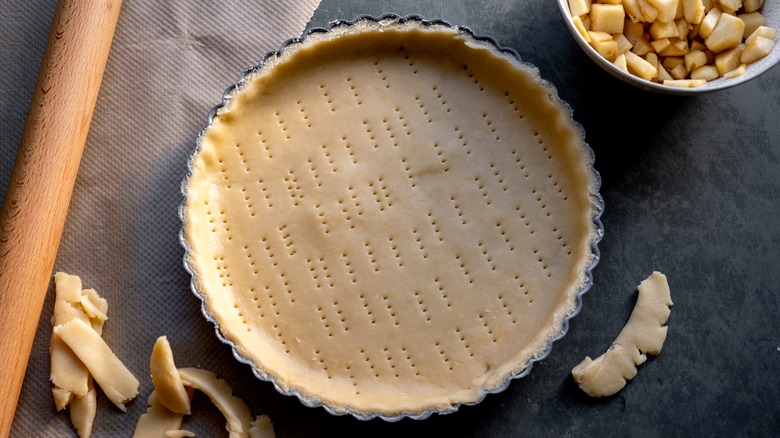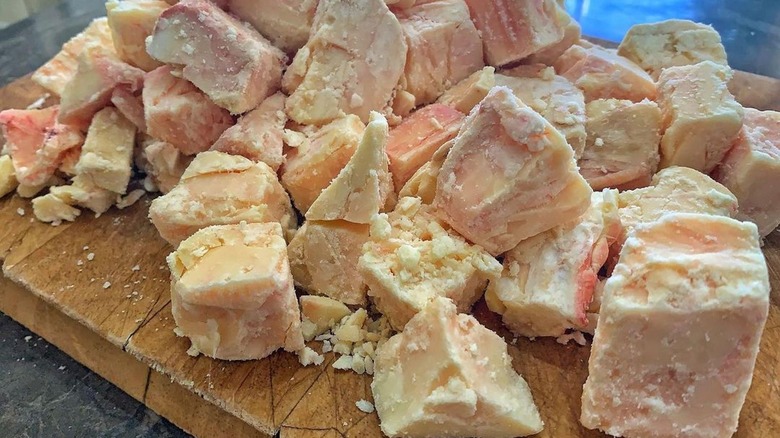Why You Should Consider Adding Suet To Your Next Pie Crust
Is there anything quite as satisfying as the perfectly baked pie? Whether you prefer sweet classics like the all-American apple pie, everyone's favorite Thanksgiving dessert, pumpkin pie, or the refreshingly tangy key lime pie, or a savory option like a hearty meat pie, just about everyone will agree that you need to have a good pie crust, one that is flaky and tender and the perfect foil for all that delicious filling on the inside.
Although the basic recipe for pie crust is really quite simple, and consists of basically flour, salt, sugar, butter, and ice water (per Simply Recipes), many bakers find that it's not quite enough for making the perfect pie crust, even when they manage to avoid common mistakes like overworking the dough or not blind proofing the crust. Not surprisingly, there are a number of "tricks" out there for making the perfect crust, from using fortune cookies as the cookie swap for crispier pie crusts to using a blend of different flours for a lighter and fluffier pie crust. Some bakers even swear by using lard to help their pie crust. If you want that perfect sweet or savory pie, you should consider adding another old-fashioned ingredient to your pie crust recipe: suet.
Suet leads to a light and flaky pie crust
Suet is a dry and crumbly type of animal fat found around the kidneys of animals like cows, sheep, and mutton. It's primarily used in cooking and baking, especially in many traditional British and Scottish dishes like pastry, mincemeat, and steamed puddings (via The Spruce Eats). According to MasterClass, suet has a crumbly texture, which leads to a less-greasy and lighter textured pie than using butter.
Similar to lard, which is pig fat, suet has a high melting point, and makes pastry dough easier to work with, notes Cooks Info — it's one of the reasons using suet leads to a flakier pie crust, since you're less likely to overwork the dough. However, compared to lard, suet has a much milder taste. Per pastry chef Avery Wittcamp, suet has a less noticeably savory flavor than lard, and acts as "a great foil for anything really sweet," though with its savory notes, it also works well with savory dishes. The Spruce Eats recommends using both suet and butter when making a pie crust for a sweet pie, but using suet alone when making a savory pie.

